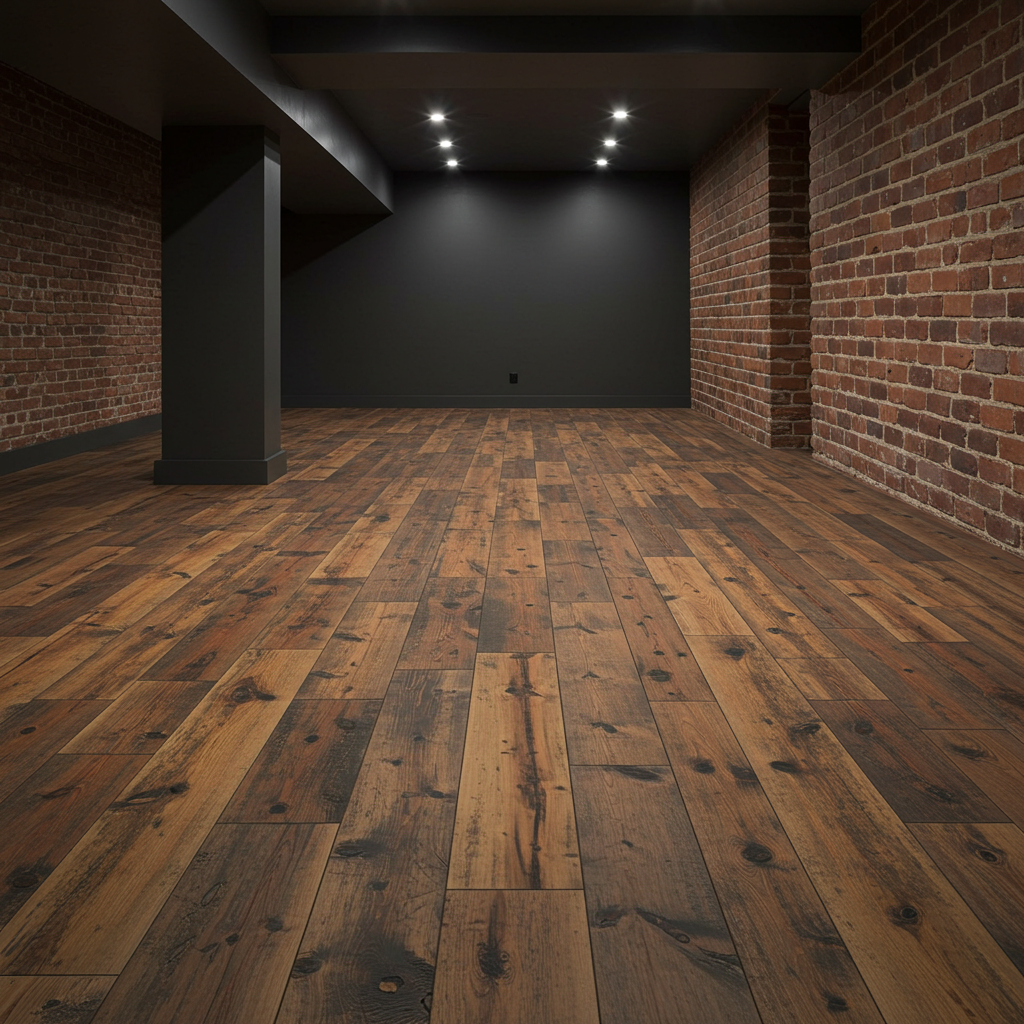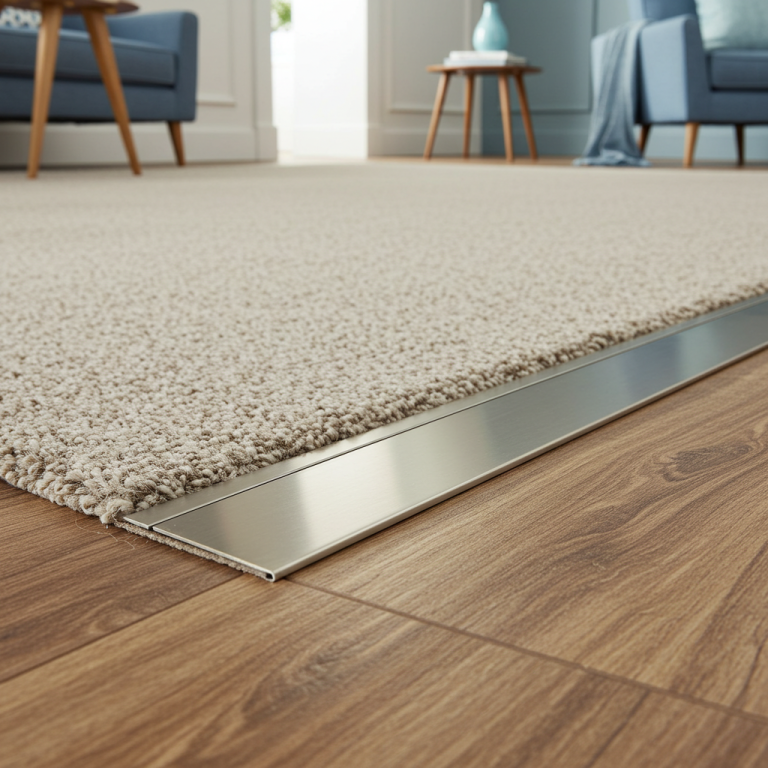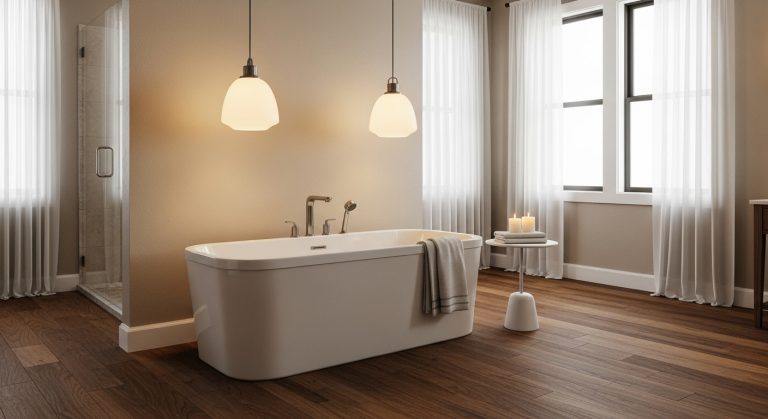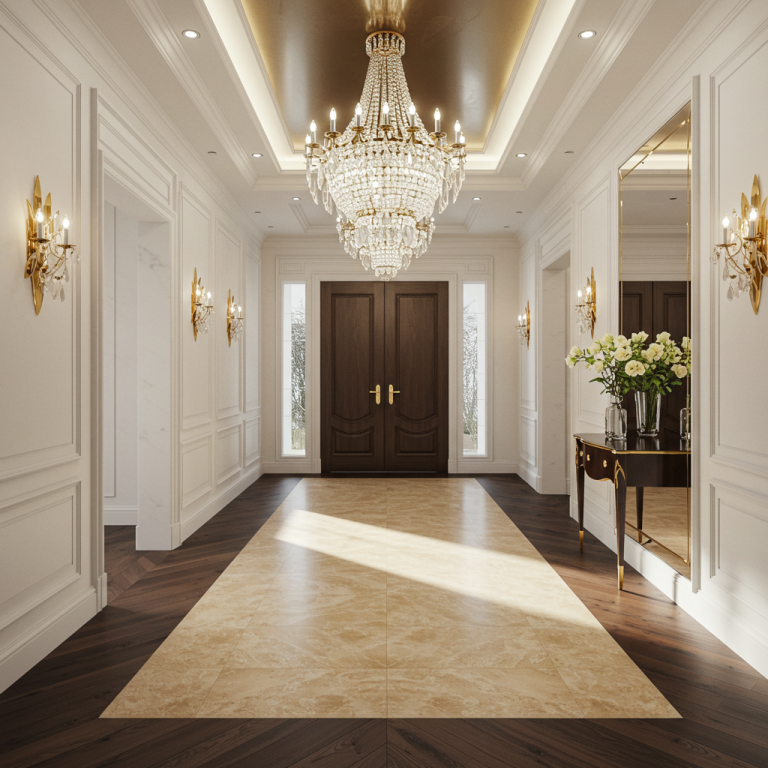Basement Flooring: The Complete Guide to Durable & Stylish Options

The basement is one of the most versatile yet challenging spaces in a home. It can be transformed into a family room, home office, gym, entertainment center, or even a guest suite. But before you bring your design vision to life, there’s one crucial factor to consider: flooring.
Unlike main-level floors, basement flooring faces unique challenges, including moisture, humidity, uneven subfloors, and temperature fluctuations. Choosing the right flooring is essential to ensure durability, comfort, and style. In this guide, we’ll cover everything you need to know about basement flooring—options, pros and cons, installation tips, and design inspiration.

Why Basement Flooring Requires Special Consideration
Before diving into material choices, it’s important to understand why basements need specialized flooring. Unlike upper levels of your home, basements are below ground, which brings specific issues:
- Moisture and Humidity – Basements are prone to dampness and water intrusion. Any flooring must resist mold, mildew, and warping.
- Temperature Fluctuations – Basements can feel cold, so flooring should help with insulation and warmth.
- Subfloor Conditions – Most basements have concrete subfloors, which may be uneven, cracked, or porous.
- Usage – The purpose of your basement (living space vs. storage vs. gym) heavily influences flooring choice.

Best Basement Flooring Options
Let’s explore the most popular basement flooring materials, their benefits, drawbacks, and ideal uses.
1. Vinyl Flooring (Luxury Vinyl Planks & Tiles)
Vinyl is one of the best choices for basement flooring. Available in luxury vinyl planks (LVP) and luxury vinyl tiles (LVT), it offers the look of hardwood or stone without the moisture risks.
Pros:
- 100% waterproof (great for damp basements)
- Realistic wood and stone designs
- Comfortable underfoot
- Easy to install (floating or glue-down)
- Low maintenance
Cons:
- Can dent under heavy furniture
- Lower resale value compared to hardwood
Best For: Finished basements used as living rooms, offices, or playrooms.

2. Ceramic or Porcelain Tile
Tiles are extremely durable and naturally water-resistant, making them ideal for moisture-prone basements.
Pros:
- Waterproof and durable
- Huge variety of styles, colors, and patterns
- Great for radiant heating systems
Cons:
- Cold and hard underfoot (unless paired with area rugs or heating)
- Can be slippery if not textured
- More expensive installation
Best For: Bathrooms, laundry rooms, or stylish modern basements.

3. Engineered Hardwood Flooring
Unlike solid hardwood, engineered hardwood has a layered structure that makes it more stable against humidity.
Pros:
- Looks and feels like real wood
- More resistant to moisture than solid wood
- Adds warmth and elegance
Cons:
- Still vulnerable to water damage (not waterproof)
- Requires a subfloor or vapor barrier
Best For: Dry basements where you want a high-end look.

4. Laminate Flooring
Laminate has improved in recent years, with water-resistant options available that mimic hardwood and stone.
Pros:
- Affordable compared to hardwood
- Easy to install (click-lock system)
- Stylish designs
Cons:
- Not fully waterproof (can swell with flooding)
- Feels less authentic than wood
Best For: Budget-friendly basement renovations.

5. Carpet and Carpet Tiles
Carpet adds warmth and coziness to a basement, especially if used as a living room or play area.
Pros:
- Comfortable and warm underfoot
- Absorbs sound (great for media rooms)
- Carpet tiles allow easy replacement if damaged
Cons:
- Not water-resistant (prone to mold if flooded)
- Requires dehumidifier for damp basements
Best For: Dry basements, home theaters, or playrooms.

6. Rubber Flooring
Rubber mats or tiles are ideal for home gyms or play areas.
Pros:
- Shock-absorbent and comfortable
- Waterproof and easy to clean
- Durable against heavy weights
Cons:
- Limited design appeal (industrial look)
- May have initial odor
Best For: Basements used as gyms, yoga studios, or kids’ playrooms.

7. Epoxy Flooring
Epoxy is a liquid coating applied directly to a concrete basement floor, creating a seamless and waterproof surface.
Pros:
- Extremely durable
- Waterproof and resistant to chemicals
- Modern, glossy look
- Low maintenance
Cons:
- Hard and cold underfoot
- Requires professional installation
- Slippery when wet
Best For: Utility spaces, garages, or modern industrial-style basements.

8. Concrete Staining & Polishing
Sometimes the best basement flooring is the existing concrete. With proper polishing, staining, or sealing, concrete can be turned into a sleek surface.
Pros:
- Extremely durable
- Custom stain colors available
- Budget-friendly
Cons:
- Cold and hard underfoot
- Can crack over time
- Requires sealing for moisture protection
Best For: Minimalist, industrial, or modern basements.

Subfloor Options for Basements
Since most basements have concrete subfloors, you may need an underlayment or subfloor system for comfort and protection. Common options include:
- DriCore Panels – Raised subfloor panels with moisture barrier.
- Foam Underlayment – Adds cushion and insulation.
- Plywood Subfloors – Provide a smooth surface for installation.
Factors to Consider When Choosing Basement Flooring
When selecting the right flooring, think about:
- Moisture Levels – Is your basement prone to flooding or just occasional dampness?
- Intended Use – Gym, office, theater, storage? Flooring needs vary.
- Budget – Vinyl and laminate are budget-friendly, while engineered hardwood and tile are pricier.
- Comfort – Do you want warmth and coziness, or sleek durability?
- Style – Choose flooring that complements your overall home design.

Design Ideas for Basement Flooring
- Modern Media Room – Use carpet tiles with accent lighting for comfort and soundproofing.
- Industrial Loft Look – Stained concrete or epoxy for a sleek, urban vibe.
- Cozy Family Room – Luxury vinyl planks with area rugs for warmth.
- Rustic Retreat – Engineered hardwood with exposed beams and warm lighting.
- Basement Gym – Rubber flooring with mirrors and durable wall finishes.

Basement Flooring Maintenance Tips
- Use a dehumidifier to control moisture.
- Seal concrete or tile floors every few years.
- Clean spills immediately to prevent mold.
- Place area rugs for added comfort and warmth.
- Inspect for cracks or leaks regularly.
Cost of Basement Flooring
- Vinyl Planks/Tiles – $2–$6 per sq. ft.
- Tile (Ceramic/Porcelain) – $3–$10 per sq. ft.
- Engineered Hardwood – $4–$12 per sq. ft.
- Laminate – $2–$5 per sq. ft.
- Carpet – $3–$7 per sq. ft.
- Rubber Flooring – $3–$8 per sq. ft.
- Epoxy Coating – $3–$12 per sq. ft.
- Polished Concrete – $2–$6 per sq. ft.
Pros & Cons of Basement Flooring Materials at a Glance
| Flooring Type | Pros | Cons |
|---|---|---|
| Vinyl | Waterproof, stylish, affordable | Can dent, not natural |
| Tile | Waterproof, durable | Cold, expensive |
| Engineered Hardwood | Warm, authentic look | Not waterproof |
| Laminate | Affordable, stylish | Not fully waterproof |
| Carpet | Cozy, soundproof | Prone to mold |
| Rubber | Durable, shock-absorbent | Limited style |
| Epoxy | Durable, waterproof | Hard, cold |
| Polished Concrete | Budget-friendly, sleek | Cold, cracks possible |
Conclusion: Choosing the Right Basement Flooring
Basement flooring isn’t one-size-fits-all—it depends on how you plan to use the space, your budget, and how much moisture your basement faces.
- For moisture-prone basements: Choose vinyl, tile, or epoxy.
- For warmth and comfort: Go with carpet or engineered wood (if dry).
- For multipurpose spaces: Consider vinyl planks for style and practicality.
- For home gyms: Rubber flooring is unbeatable.
With the right flooring, your basement can transform from a dark, unused space into one of the most inviting areas of your home.






